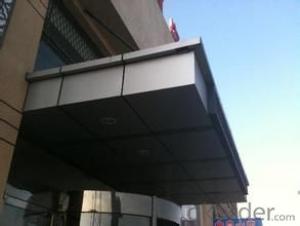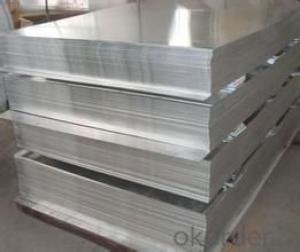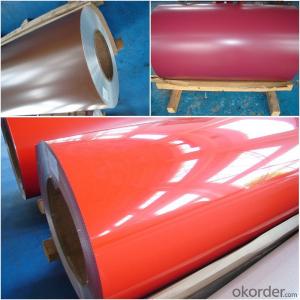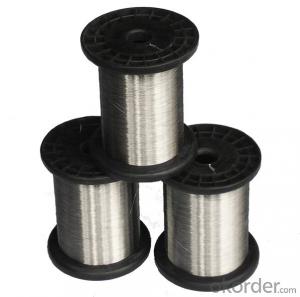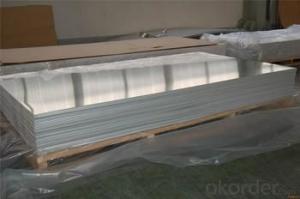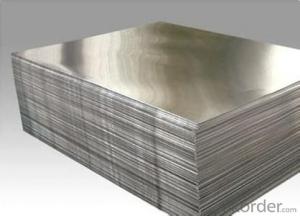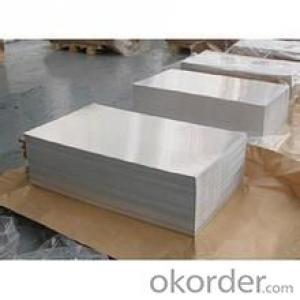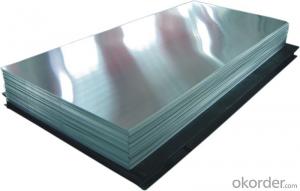Copper Plated Aluminum Sheets - Mill Finish Aluminum Sheet for Panels
- Loading Port:
- China Main Port
- Payment Terms:
- TT OR LC
- Min Order Qty:
- -
- Supply Capability:
- -
OKorder Service Pledge
OKorder Financial Service
You Might Also Like
Aluminium is a relatively soft, durable, lightweight, ductileand malleablemetalwith appearance ranging from silvery to dull gray, depending on the surfaceroughness. It is nonmagnetic and does not easily ignite. A fresh film ofaluminium serves as a good reflector (approximately 92%) of visible lightand an excellent reflector (as much as 98%) of medium and far infraredradiation. The yield strength of pure aluminium is 7–11 MPa,while aluminium alloys have yield strengths ranging from200 MPa to 600 MPa. Aluminium has about one-third the densityand stiffness of steel. It is easily machined,cast, drawn and extruded.
Aluminium alloys (or aluminum alloys; see spellingdifferences) are alloysin which aluminium(Al) is the predominant metal. The typical alloying elements are copper, magnesium,manganese,silicon,tin and zinc. There are twoprincipal classifications, namely casting alloys and wrought alloys, both of which are furthersubdivided into the categories heat-treatableand non-heat-treatable. About 85% of aluminium is used for wrought products,for example rolled plate, foils and extrusions.Cast aluminium alloys yield cost-effective products due to the low meltingpoint, although they generally have lower tensile strengthsthan wrought alloys. The most important cast aluminium alloy system is Al–Si,where the high levels of silicon (4.0–13%) contribute to give good castingcharacteristics. Aluminium alloys are widely used in engineering structures andcomponents where light weight or corrosion resistance is required
Specification:
Alloy: AA1050, 1060, 1100,AA3003, 3005, 3015, 5052, 5754, 5083,8011, etc
Temper:H14/16/18/22/24/32, HO etc.
Thickness:0.2mm—100mm
Width: 100mm—2300mm (Can be slitted)
Application: Roofing, Can stock, Marine plate,Anti-slipery purpose in vehicles, packing and appliance.
Features:
1. Excellent quality of products
2. Quick delivery
3. Best service to clients
4. BV,SGS avalible
5. No buckle o waveness
6. Tension leveling
7. Certificate of Origin
8. Form A,E
Packaging Detail:
Carton ,Woodenpallet with plastic protection packing ,standard seaworthy packing or as yourrequest.
ProductionCapacity:
AnnualProduction capacity of 600,000 tons.
Products areexported to United States, Canada, U.A.E, Brazil, Mexico,Thailand, Vietnam,Nigeria etc, over 100 countries andregions all over the world.
Production Line:
CNBM aluminumproduction base is comprised of 18 aluminumannealers, 10 coil and foilmills, 4 continuous production lines, 2hot rolling production line and 3prepainted lines.
FAQ:
1. What is the form of payment?
Normally 30% TT, L/C
2. Type of quotation?
FOB, CFR, CIF
3. Port of loading?
Shanghai port
4. Delivery time?
30 day after client’s deposit
- Q: Where is the difference between the 5052 aluminum plate and the 1060 Aluminum plate?
- Composition and properties are not the same, first of all, 5052 belong to the alloy (aluminum magnesium) aluminum, aluminum content of about 95%, the magnesium content of about 4%, there are some other trace metals, 1060 pure aluminum (aluminum content of 99.6%, the balance of other metal elements); followed by mechanical propertiesTwo aluminum in the same state, 5052 to 1060 in hardness, elongation, tensile strength and so on are not the same. Specific depends on what state (H14, H32, H24, O state, etc.); finally, because the price of different components determine the price is different, the price is usually 5052 higher than 1060.
- Q: Can 101 aluminum sheets be powder coated?
- Yes, 101 aluminum sheets can be powder coated. Powder coating is a versatile and durable finishing process that can be applied to various materials, including aluminum. The process involves applying a dry powder to the surface of the aluminum sheets, which is then heated and fused to create a smooth and durable coating. Powder coating offers a wide range of colors and finishes, making it an ideal choice for enhancing the appearance and protecting the aluminum sheets.
- Q: Is it possible to utilize aluminum sheets for crafting distinctive architectural structures?
- <p>Yes, aluminum sheets can be used to create unique architectural designs. Known for their strength, durability, and lightweight properties, aluminum sheets are ideal for various architectural applications. They can be easily shaped and cut to fit specific design requirements, offering flexibility in design and construction. Additionally, aluminum's resistance to corrosion and weathering makes it a sustainable choice for long-lasting structures. Architects often use aluminum for facades, roofing, and other exterior elements due to its modern aesthetic and low maintenance needs.</p>
- Q: My frame snapped and I want to fix it by welding it back together. In order to do that, I need to know what all is in the aluminum.
- You can NOT weld back an aluminum frame unless you have the facilities to anneal and heat treat the frame again. Rewelding without the post treatments will result in a very soft area around the new weld causing sudden catastrophic failure... this means if you are riding it could fail at any time causing injury or death. EDIT: Wait just a durn minute. The 2100 and 2300 had carbon fiber tubes bonded to aluminum lugs and stays. If your bike failed then you ABSOLUTELY should not try to weld it. The heat from welding (even if you had post treatment facilities) would destroy the bond between the CF and aluminum. Fair warning- cut the frame apart and throw it away.
- Q: How much should I be charged to have aluminum siding installed? I have a two floor single family home which is detached. I also would want new gutters installed and soffets (i think that is what they are called). One company estimated 12k and another said 10K. This would entail just putting the siding over the original siding. Any answers are appreciated.
- They don't make aluminum siding anymore, thank god, they only make vinyl siding. It really depends on the brand you buy and the company that installs it. I used to be a tin man before becoming a professor and I can tell you that you should do a little research first. You want stuff that will hold up in wind, is easy to clean, has a nice look and colors won't fade. You want to be sure it is made of virgin vinyl, sounds weird but trust me, if it isn't it'll fade in a few years and look like crap. The company needs to know what they are doing too or the seams and lines will be terrible, so make sure your company is really in the siding business and not just some jack-leg contractor that says I can do it. You will end up with a crap job. Now I can't remember for certain and it has been a number of years, but 10 to 12 sounds good. I hope they are going to remove the old stuff, check your wood underneath and possibly put on a moisture barrier. I would ask what they plan on doing in detail. Good luck.
- Q: why does 10% sulfuric acid not react with aluminum sheet?
- 10% sulfuric acid has a high concentration and will be passivated and formulate a layer of oxide film after reacting with aluminum,and the reaction will stop after seperating sulfuric acid and aluminum. there is a layer of Al2O3 oxide film on the surface of aluminum, so it's hard for sulfuric acid to break the oxide film and react with aluminum.
- Q: What is the flexural modulus of aluminum sheets?
- The flexural modulus of aluminum sheets refers to the measure of the stiffness or rigidity of the material when subjected to bending or flexural stress. It is a mechanical property that quantifies how well an aluminum sheet can resist deformation under applied force. The flexural modulus of aluminum sheets typically ranges between 69 GPa (gigapascals) to 79 GPa, depending on the specific alloy and temper. However, it is important to note that the flexural modulus can vary slightly based on factors such as thickness, heat treatment, and manufacturing processes. Aluminum is known for its excellent strength-to-weight ratio, making it a popular choice for various applications where lightweight and durable materials are required. Its relatively high flexural modulus allows aluminum sheets to maintain their shape and resist bending or flexing, making them suitable for uses such as aircraft structures, automotive components, and building construction. It is worth mentioning that the flexural modulus of aluminum can be enhanced by alloying elements or through heat treatment processes. For instance, certain aluminum alloys like 7075 or 2024 may exhibit higher flexural modulus values due to their increased strength and stiffness properties. In conclusion, the flexural modulus of aluminum sheets is an important mechanical property that determines their ability to withstand bending or flexural stress. It provides insight into the material's rigidity and helps engineers and designers select the appropriate aluminum alloy and thickness for various applications.
- Q: What are the maximum dimensions of aluminum sheets?
- The maximum dimensions of aluminum sheets can vary depending on the manufacturing capabilities of different suppliers. However, in general, aluminum sheets are available in a wide range of sizes to meet various application requirements. Commonly, the maximum width of aluminum sheets can be up to 72 inches (6 feet), while the maximum length can reach around 240 inches (20 feet). These dimensions can provide ample material for a wide range of projects, including construction, manufacturing, and industrial applications. It is important to note that specific suppliers may have their own limitations, so it is advisable to consult with them directly to determine the maximum dimensions available for aluminum sheets.
- Q: What is the price range of 101 aluminum sheets?
- The price range of 101 aluminum sheets can vary depending on factors such as size, quantity, and supplier. However, generally speaking, the price range for 101 aluminum sheets can be anywhere from $50 to $150 per sheet.
- Q: Is aluminum sheet magnetic?
- Incorrect, aluminum sheets lack magnetic properties. As a non-magnetic metal, aluminum neither attracts nor repels magnetic materials due to the absence of magnetic elements within its composition. Consequently, attempting to affix a magnet onto an aluminum sheet will prove futile, as it remains unaffected by magnetic fields.
Send your message to us
Copper Plated Aluminum Sheets - Mill Finish Aluminum Sheet for Panels
- Loading Port:
- China Main Port
- Payment Terms:
- TT OR LC
- Min Order Qty:
- -
- Supply Capability:
- -
OKorder Service Pledge
OKorder Financial Service
Similar products
Hot products
Hot Searches
Related keywords
